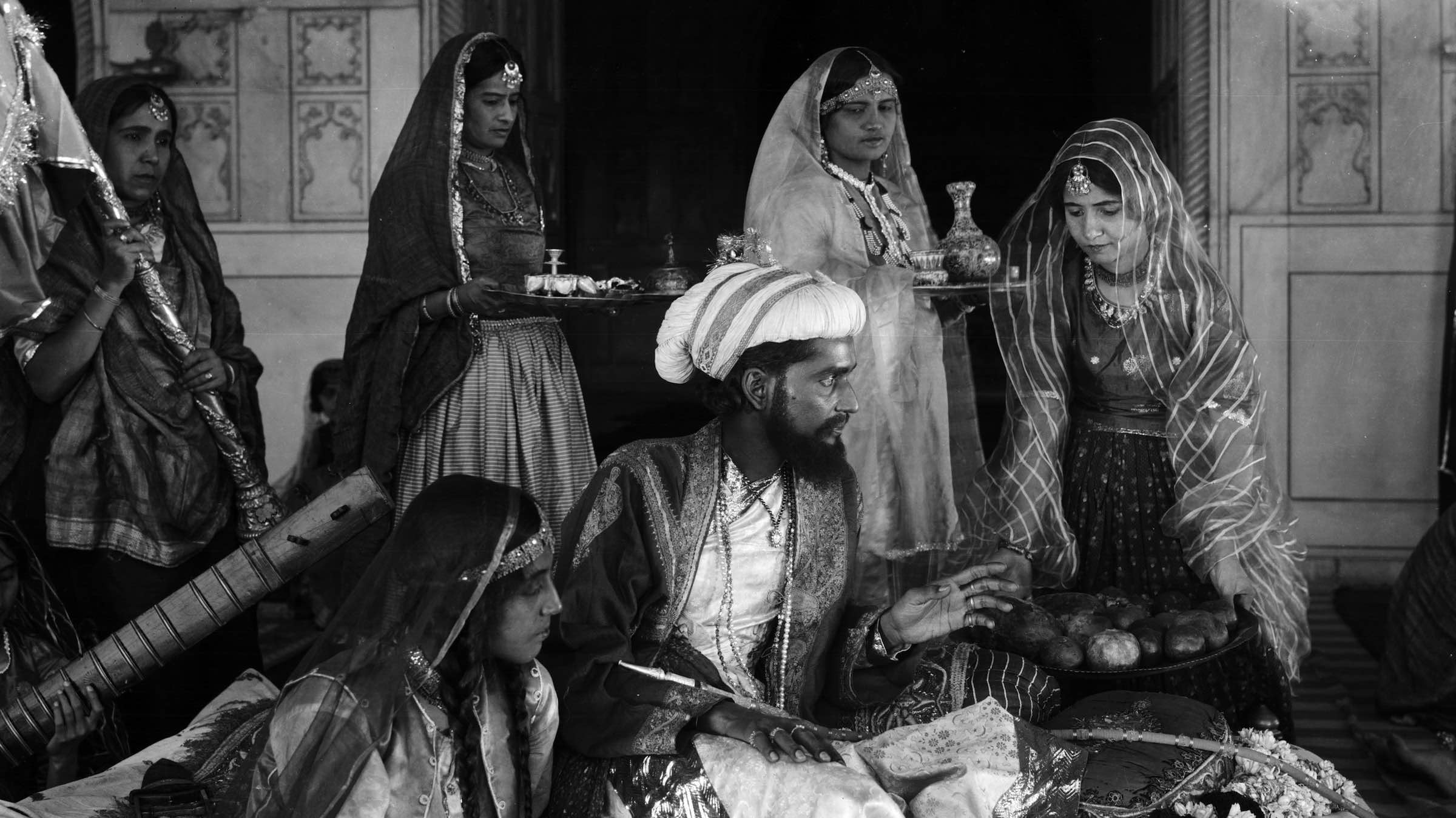You can read the program essay for our 2019 screening of Shiraz: A Romance of India here
Movies took root in India in much the same way as they did in many European countries: from the sensation caused by the Lumière brothers, whose actualités were shown in Bombay on July 7, 1896, just six months after they premiered in Paris. Motion picture cameras became available in India shortly thereafter, and they were used exclusively for creating documentary footage until the early 1900s.
In the next decade, joint productions between India and the British saw the development of fiction forms, but the first completely indigenous narrative film did not appear until 1913, when Dhundiraj Govind “Dadasaheb” Phalke produced the four-reel Raja Harischandra, based on a story from the Mahabharata. Phalke was a religious man from a high caste, and he lent legitimacy to the new industry as a respectable profession and art form. Raja Harischandra and the documentary How Films Are Prepared, which he produced at the same time, signaled the birth of the film industry in India, and established Phalke as its founding figure.
While Phalke specialized in films with mythological themes, filmmakers in Southern India pioneered the making of historical films. During the early 1920s, India began its struggle against British colonial rule, asserting its own national and religious identity. The British heavily censored anything perceived as seditious or inflammatory, but they turned a blind eye to the fantastical or historical, giving birth to a filmmaking tradition that Shiraz inherited.
Shiraz is a multilayered fairy tale that tells the story of the humble architect Shiraz, who devotes his life to the adoration of Selima, a woman fated for royalty. The central character, named for the city of Shiraz in Iran where many famous Persian poets are buried, is a wholly fictitious creation. Several historical facts pertaining to the origin of the Taj Mahal have been altered for the screen version, such as the name of the princess for whom it was built (known in the film as Selima, her real name was Arjunand Banu). While Shah Jahan, the fifth Moghul emperor, did indeed build the Taj Mahal as an expression of his eternal devotion to his queen, the film depends on the fictional character of Shiraz to tell its story of unrequited love and ultimate transcendence.
Although the film was photographed entirely on historical sites and all the actors are Indian, the crew was mostly German. It was produced by its star Himansu Rai, who made both Shiraz and The Light of Asia (1926) specifically for export to international markets.
In the early 1920s, Rai attended law school in London, where he met Niranjan Pal, playwright, author, and Indian nationalist, who was studying theater and operating an Indian stage company. Rai landed a part in Pal’s production of The Goddess, based on Edwin Arnold’s poem The Light of Asia. Upon finishing law school, Rai traveled to Munich for the sole purpose of meeting Peter Ostermayr and Franz Osten, brothers who were known both in England and Germany for producing and directing films. (Franz had changed his name several years before in order to differentiate himself from his brother.) Rai succeeded in luring Franz to India, where they began production on a film of The Light of Asia.
Upon its release Shiraz received great critical acclaim. The Illustrated Weekly of India declared “Calcutta cinema fans have lately been afforded the opportunity to see Shiraz and the general verdict is: ‘Excellent!’” Rai, who believed that the involvement of the Ostermayr brothers would aid him in finding a European distributor, once more traveled to England where he scheduled a private screening for German and English nobility, who responded positively. Light of Asia and Shiraz were distributed jointly by Germany’s Ufa studios and British Institutional Films of England, and both proved to be highly successful.
Himansu Rai, Niranjan Pal, and Franz Osten became major influences in Indian filmmaking with the formation of Bombay Talkies in 1934. Together they made 16 movies, successfully building a national audience in the process. The association came to an end at the outset of the war in 1940 when Osten was sent to a British internment camp. Upon his release, he returned to Germany, where he spent the last years of his life as the director of a health spa in Bavaria. Himansu Rai so devoted himself to Bombay Talkies that he suffered a nervous breakdown, which led to his untimely death in 1940. His wife Devika Rani, an actress he had met on the set of Shiraz, assumed control of the studio and operated it successfully for several years. In 1970, she was awarded the first Dadasaheb Phalke Award, and she is remembered today as the first lady of Indian cinema. Niranjan Pal continued to write novels and plays during his tenure at Bombay Talkies, and he wrote the screenplays for several of the most successful Indian sound films of the 1930s. He died in 1959.
Today the Indian film industry, fondly known as Bollywood, is the largest and most influential in the world, producing more films annually than Hollywood.
Presented at SFSFF 2002 with live music by Ben Kunin (sarode), Debopriyo Sarkar (tabla), and Kathleen Curnow (tanpura)

